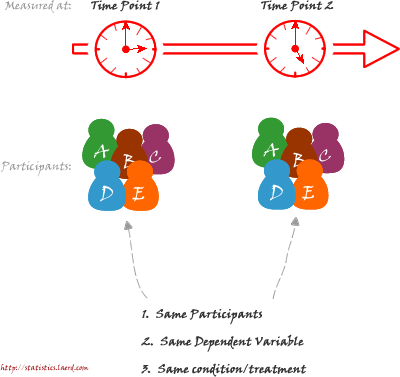How else might you use the dependent t-test?
You can also use the dependent t-test to study more complex study designs although it is not normally recommended. The most common, more complex study design where you might use the dependent t-test is where you have a crossover design with two different interventions that are both performed by the same participants. One example of this design is where you have one of the interventions act as a control. For example, you might want to investigate whether a course of diet counselling can help people lose weight. To study this you could simply measure participants' weight before and after the diet counselling course for any changes in weight using a dependent t-test. However, to improve the study design you also include want to include a control trial. During this control trial, the participants could either receive "normal" counselling or do nothing at all, or something else you deem appropriate. In order to assess this study using a dependent t-test, you would use the same participants for the control trial as the diet counselling trial. You then measure the differences between the interventions at the end, and only at the end, of the two interventions. Remember, however, that this is unlikely to be the preferred statistical analysis for this study design.
What are the assumptions of the dependent t-test?
The types of variable needed for the dependent t-test have already been discussed earlier in this guide. In addition, the distribution of the differences between the scores of the two related groups needs to be normally distributed. You can do this by simply subtracting each individuals' score in one group from their score in the other related group and then testing for normality in the normal way (see our Testing for Normality guide to learn how to test for normality in SPSS Statistics). It is important to note that the two related groups do not need to be normally distributed themselves – just the differences between the groups.
We explain more about the dependent t-test on the next page.
